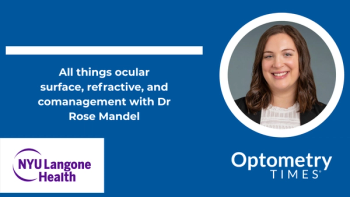
Significant association between COVID-19 and astigmatism in Hong Kong schoolchildren
An investigation into the association between COVID-19 and childhood astigmatism showed substantial increases in the prevalence and severity of refractive and corneal astigmatism, independent of myopia,1 reported Ka Wai Kam, MSc, the first study author from the Department of Ophthalmology and Visual Sciences, The Chinese University of Hong Kong, and the Department of Ophthalmology and Visual Sciences, Prince of Wales Hospital, Hong Kong Special Administrative Region, China.
Kam and colleagues explained, “Considering the association between myopia and astigmatism, 2 local studies evaluated the prevalence of refractive astigmatism in Hong Kong during the enforcement of COVID-19 restrictions in 2020 and compared with historical data from earlier years.2,3 The high co-occurrence of astigmatism with myopia suggested that the change in the prevalence of refractive astigmatism might result from axial elongation. Nonetheless, no data exist on the changes in the corneal component of astigmatism, which might also be related to an increase in refractive astigmatism, and no study has reported the prevalence of astigmatism after the lift of social and school restrictions.”
They conducted a population-based cross-sectional study that stratified all the primary schools registered with Education Bureau in Hong Kong into 7 clustered regions used by Hospital Authority Services in Hong Kong.
The students, aged 6 to 8 years, underwent comprehensive ocular examinations at 2 academic medical centers in Hong Kong from 2015 to 2023. Astigmatism was measured with optical biometry and auto-refractor after cycloplegia. The primary outcomes were the annual prevalence rates of refractive astigmatism and corneal astigmatism.
A total of 21,655 children were included in the study (52.9% boys; mean age, 7.31 years).
The authors found a prevalence rate of refractive astigmatism of at least 1.0 diopter (D) in 21.4% and corneal astigmatism of at least 1.0 D 59.8% in 2015 that increased to 34.7% (difference, 13.3%; 95% confidence interval [CI], 9.3%-17.3%) and 64.7% (difference, 4.9%; 95% CI, 0.5%-9.2%), respectively, in 2022 to 2023.
The COVID-19 pandemic was associated with a 20% increase in the risk of refractive astigmatism (odds ratio [OR], 1.20; 95% CI, 1.09-1.33), a 26% increase in the risk of corneal astigmatism (OR, 1.26; 95% CI, 1.15-1.38), a 0.04-D magnitude of refractive astigmatism (95% CI, 0.02-0.07), and a 0.05-D magnitude of corneal astigmatism (95% CI, 0.02-0.08) (P < 0.001 for all comparisons) compared with the prepandemic period of 2015 to 2019 and after adjusting for sociodemographic factors, parental astigmatism, and child myopia, the investigators reported.
They concluded, “This study found an increase in both the prevalence and severity of refractive astigmatism and corneal astigmatism after the COVID-19 pandemic in schoolchildren in Hong Kong. Corneal changes especially along the steepest meridian may explain some of the progression of the corneal astigmatism. The potential impact of higher degrees of astigmatism may warrant dedicated efforts to elucidate the relationship between environmental and/or lifestyle factors, as well as the pathophysiology of astigmatism, in order to preserve children’s eyesight and quality of life.
References
- Kam KA, Shing E, Zhang Y, et al. Prevalence and severity of astigmatism in children after COVID-19. JAMA Ophthalmol. 2025;143:383-391. doi:10.1001/jamaophthalmol.2025.0205
- Wong SC, Kee CS, Leung TW. High prevalence of astigmatism in children after school suspension during the COVID-19 pandemic is associated with axial elongation. Children (Basel). 2022;9:919. doi:
10.3390/children9060919 - Liang Y, Leung TW, Lian JT, Kee CS. Significant increase in astigmatism in children after study at home during the COVID-19 lockdown. Clin Exp Optom. 2023;106:322-330. doi:
10.1080/08164622.2021.2024071
Newsletter
Want more insights like this? Subscribe to Optometry Times and get clinical pearls and practice tips delivered straight to your inbox.



















































.png)


